Client reporting is often a sore spot for agencies. Collating social media stats from multiple channels, pulling out their KPIs, and turning them into a good-looking report can take hours. That’s hours a marketing agency doesn’t have. The process can be time-consuming, tedious, and sometimes goes unappreciated by clients.
Or at least, it used to be.
Let’s look at how easy it is to create reports for multiple clients using Agorapulse.
Creating Multiple Client Reports: Agency Pain Points
As director of Contentworks Agency, I can conclude that the traditional methods we used to create client reports were dull, exhausting, often inaccurate.
Time-consuming
86% of agencies listed reporting as an essential service, according to CallRail’s Outlook for Digital Agencies report. Some 56 hours per week are spent for reporting, according to the agency report.
As an agency with multiple clients, you could easily spend several days creating reports. Time that you don’t have and that you would prefer to spend talking to clients and planning marketing campaigns.
So tedious
My pet peeve is logging in and out of different social media networks.
On average, each of our clients has three social media networks managed by us. Multiply this by 15+ clients—and you have 45 logins. Then, you need to grapple with individual platforms reporting, downloading CSV files, pulling out the data, and putting it all together in a PowerPoint you had to make. No thanks.
Inaccurate data
One thing I realized when creating reports manually back in the day, is that there may be inaccuracies in the data.
That could be because:
- You’re not comparing time frames correctly.
- Your reporting starts on a different day each month.
- You’re not pulling the same figures each time.
- Your manual calculations and comparisons about follower numbers and engagement are incorrect.
Busy, stressed-out social media managers can easily make these mistakes when compiling multiple client reports.
Cut corners
Social media managers are not in the same mindset as social media data analysts and don’t usually enjoy creating these reports. That attitude can lead to corners being cut, guesstimates being done, and the clients not ending up with an accurate picture of their social media landscape.
Avoid common mistakes even expert social media managers make.
Client Reporting: Pain Points
Now we’ve got the agency pain points out of the way, how about the client ones?
Years of experience working with clients and previously with management and shareholders have given me some great insights. I understand what works and what doesn’t and more specifically, what annoys clients about reporting.
Complex jargon
This is one of the biggest grievances that clients have about social media reporting. Your agency has thrown a ton of charts, jargon like LTV, CTA and CTR into a report and delivered it.
Most of the time your clients or shareholders are not social media experts. They don’t need to be because they hired you!
Showing off by cramming in impressive buzzwords and pages of data is likely to irritate your clients. Alternatively, they simply won’t understand the data. So, they may draw their own incorrect conclusions on your work. Our clients are busy people. They don’t want to spend time unpacking your jargon.
Difficult to read
Along with complex jargon in the client annoyance stakes is a report that’s difficult to read. Perhaps it’s multiple different documents for each channel. Or maybe it’s delivered via Excel or includes large paragraphs of text that are time-consuming to read.
Clients generally don’t have time for this.
They want to see:
- Headline data
- An indication of progress
- Next actions
Inconsistent
Clients don’t like receiving reports at different times of the month or for unequal timeframes.
For example, you start out sending reports at the end of January, end of February, then you send one on March 5 … then April 10.
Your clients like to see your reporting at the same time each month and may even plan team meetings or shareholder emails to include it.
It’s also easier to compare full months with each other than four weeks here and three weeks there. I like to send our reports at the end of the month on the last working day.
Agency tip: Be sure to specify the days you will aim to send your reports each month, so your client can plan ahead.
Find out how to prepare now for end-of-year client reporting
No conclusion
Client reports should always include a brief conclusion, recommendation, and action points.
For example: Based on your reports, we recommend you create more GIFs and videos for your Twitter as these see 3x the engagement of regular tweets.
Your action items don’t need to be essays. In fact, better that they’re not. Always include highlighted data and small snippets of education.
This is important for you because …
Not KPI-related
Marketing agencies are usually in the know about client KPIs.
Either they’ve told us at the start or we’ve told them at the start in their initial strategy. If you then produce reports for clients that have no bearing or mention of their social media KPIs, you will make your clients question what you’re doing.
You will also make it difficult for them to justify using an agency when they cannot follow the link between goals and actions.
Always link your client reporting back to each client’s unique KPIs. If you’re not achieving them, don’t be afraid to say so. It simply requires a change of direction.
So, you can see that actually, an agency’s pain points and a client’s are much the same. Neither wants to handle lengthy complex reports that take hours to produce and read.
Why do that then?
Let’s look at some best practices for client reporting and how Agorapulse can help agencies create reports for multiple clients.
How Often Should I Do Client Reporting?
Consistency is important in regards to sending reports. Doing so will also help you as an agency because you can dedicate the last working day of the month to creating and sending reports, as an example.
Consider these timeframes:
One-off reports
If you’ve run a campaign or spent the budget on advertising then you might want to create a smaller and more focused one-off report to analyze campaign performance.
Research reports
Sometimes, a client will show an interest in a particular keyword, region, or demographic. You can be an awesome agency by offering your client a research report to help them decide.
Regular reports
As we discussed, this should be your staple report. Monthly reports that show your progress on social and benchmark the clients’ KPIs. You can also include a competitive comparison month on month, too.
What Timeframe Should the Client Report Cover?
While we need to remain consistent with our monthly client reports, different timeframes might be used sometimes.
Takeover reports
If your agency has just taken over the management of a client’s social media channels then produce an interim initial report. That could be a snapshot comparison between your first month running the account and their previous month.
Weekly reports
If you’re spending budget on a particular campaign, you will want to keep a sharper eye on it rather than leave it to run for a month.
Monthly reports
Regular monthly reports are the norm for us. (We aim to produce them on the last working day of each month.)
Quarterly/yearly reports
Many clients have quarterly or yearly meetings with shareholders and directors. Providing them with the exact snapshot to take into their meeting is usually very much appreciated.
Agency tip: Agencies working with multiple clients might want to stick to the same reporting timeframe. If you onboard a client mid-month, then produce a report to the end of the month and then get them into monthly report patterns like your other clients.
What Data Should You Include in a Client Report?
The data you include in your report should be meaningful to clients. So, in this case, one size does not fit all. A basic report from Agorapulse includes the following metrics:
- Account growth
- Audience demographics
- Impressions
- Content overview
- Engagement
- Community management
- Best times to publish
These are metrics shown per channel and ideal for a small marketing team or an agency just starting out.
Here’s a report from Contentworks’ own Facebook account in the month running April 16 to May 15. This is using the basic reporting method, so each channel report would be created separately.

Overview of key performance metrics
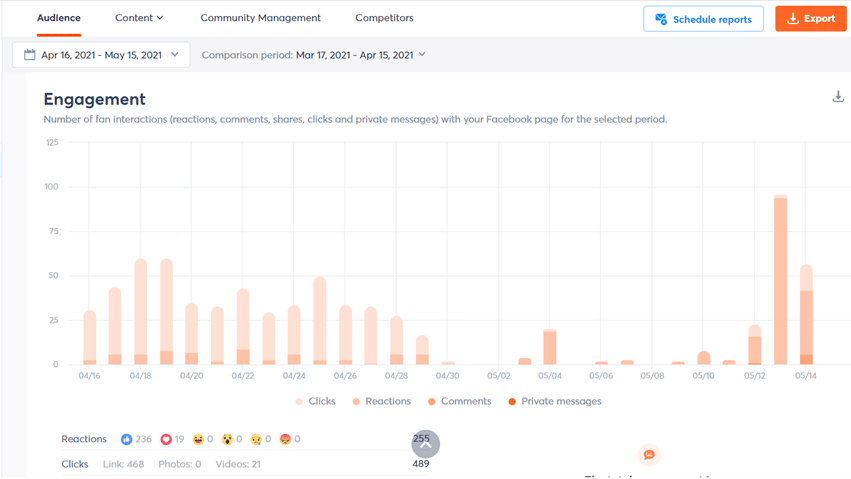
Audience engagement metrics for a social media report
A Power Report Offers Many More Options for Client Reporting
An Agorapulse Power Report has a ton more options that are accessed via the Create A Report tab on the top left side of your dashboard.
These are ideal for creating multiple reports on multiple channels.
For agencies, this is a winner because you can choose the exact report you need for your clients. Want to dig into a specific channel’s campaign? You can go for an individual report.
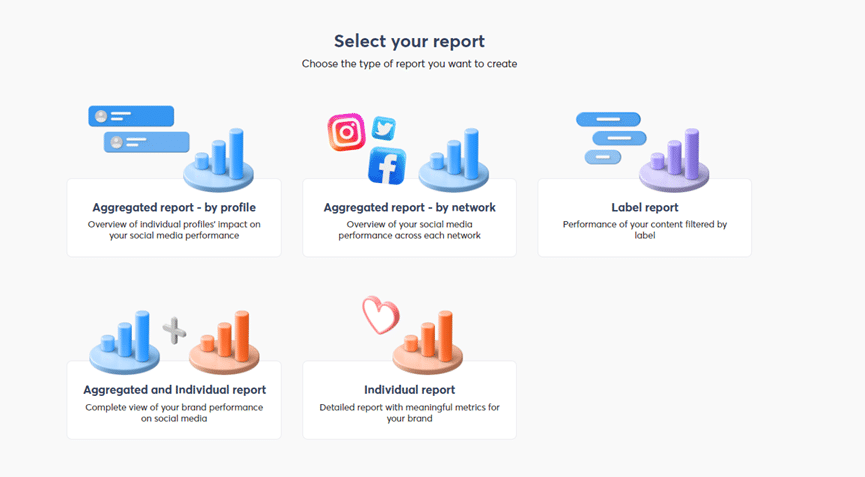
Example of Agorapulse’s Power Report types
Managing multiple channels for your clients? Access all of them at once using an aggregated reporting method.
Here’s a testimonial from Kelly of Baby Got Content about Power Reports:
I can see all my client accounts on the left side and select the ones I want to include up to 10. A client is unlikely to have more than 10 social media networks with you. The average is 3. So, that means everything fits in one report.

Social profiles to include in your social media report
Once you’ve chosen your channels, you can choose the metrics you want to see included.
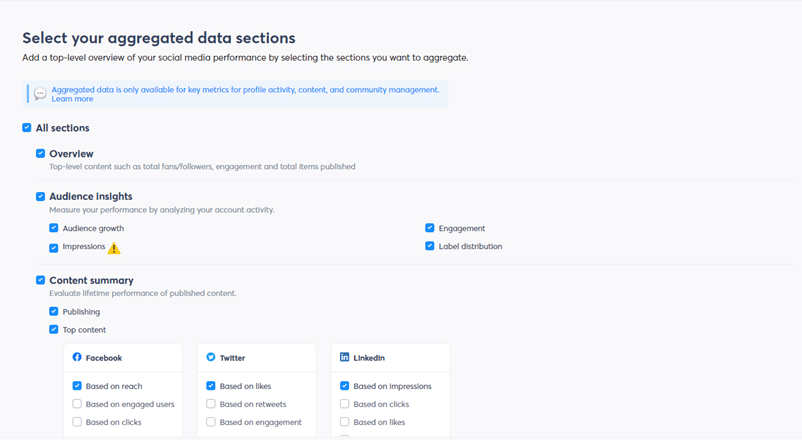
Select your aggregated data sections for your social media report for agency clients.

Community management can be included in your report.
Schedule the reports to go out each week or month without you having to log in and activate them. It’s a good idea for you to also send them to yourself, so you have seen them along with your client.
Additionally, you can select the exact time, timezone, day, or date you want the reports to go out each month. Doing saves on calendar reminders or sticky notes notes on your desk!
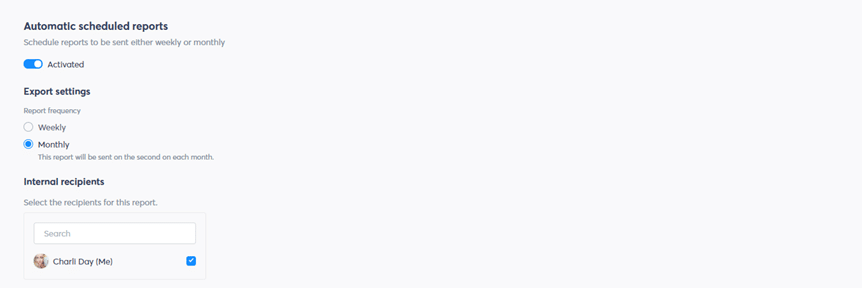
You can schedule reports with Agorapulse.
Customize the report for a professional agency feel by adding the logo of your agency or your clients.
Below, you can see I added my Charli Says logo (client) and the Contentworks Agency logo (agency). This will then appear on the report giving it a professional feel.

You can customize your report with Agorapulse.

Export your social media report for agency clients as a PDF.
Aggregated Reports are great for agencies needing to send multiple client reports. They combine data from the channels at the top:
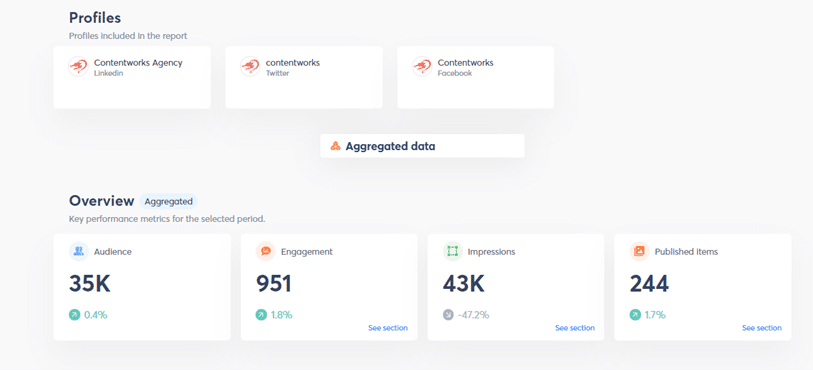
Select profiles for your client reporting.
But then they also itemize each channel below like this.
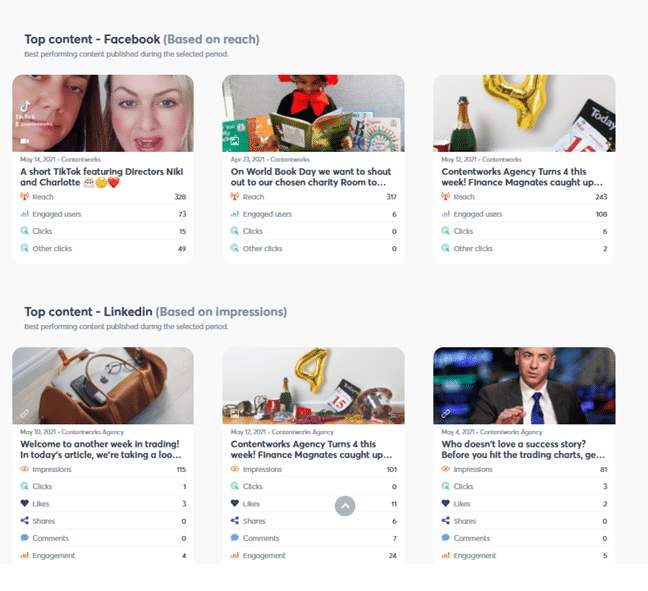
Include top content in your agency client reporting.
Clients love to see their Top Content. What performed best in the month for each channel. This highly visual report makes it easy for clients to scan and see what’s happening for their brand.
You can use the Label Reports features of Power Reports to track the success of marketing campaigns, generate tailored reports for any stakeholder and inform your marketing strategy with additional data. You can create as many labels as you need for up to five social profiles.
Create better content with data from your social media report
When you hit Export, your client report is sent to your chosen email within five minutes.
If you have got your reports scheduled, they will go out automatically without you even needing to log in!
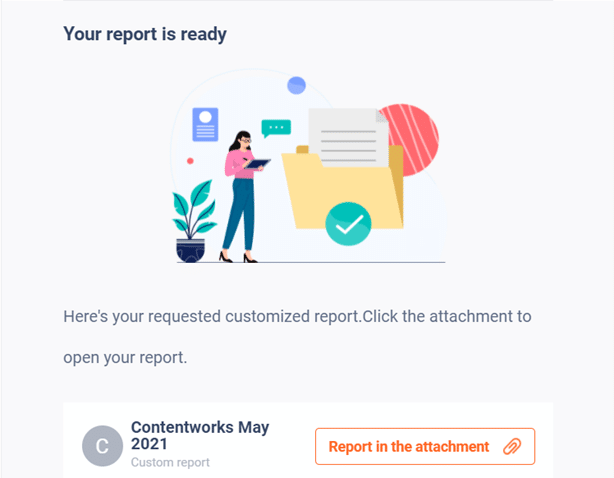
Example of a customized report for your agency clients
You or your clients will receive a PDF report containing their own customized report. This is easy to read, share and save. It contains all the channel data in one document.
Agencies producing reports for multiple clients can easily save them in the client’s server folders after receiving them automatically each week or month.
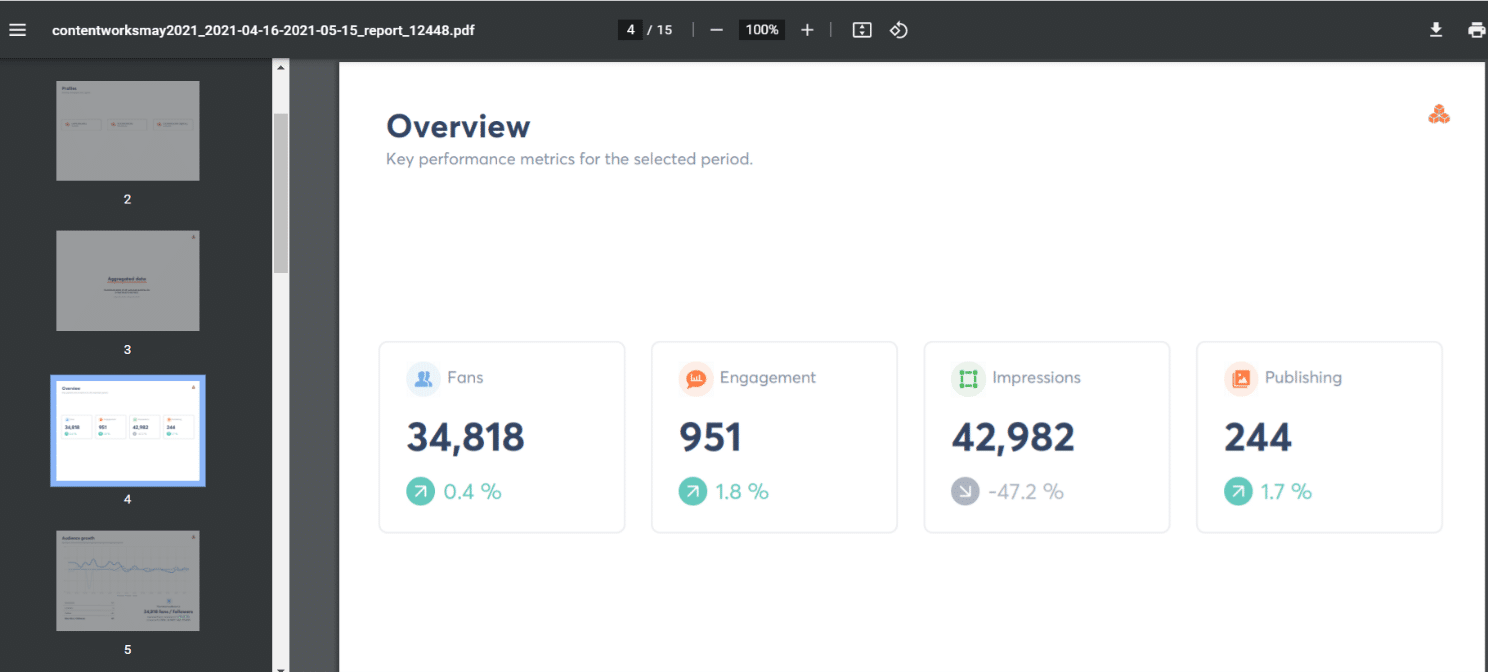
Overview of key performance metrics
You can also choose to add slides to your report for your conclusions or personally mail reports to clients with an email overview. This depends on your agency workload and whether you want to remove the scheduled element of reporting.
Client reporting tip: Arrange regular Zoom calls with your clients. It doesn’t need to be monthly, but a quarterly call to go through the reports is a winner. Have the reports in front of you or pull of a quarterly report to go through together. Doing so gives your client the chance to ask questions or discuss action items.
Infographic: Types of Social Media Reports
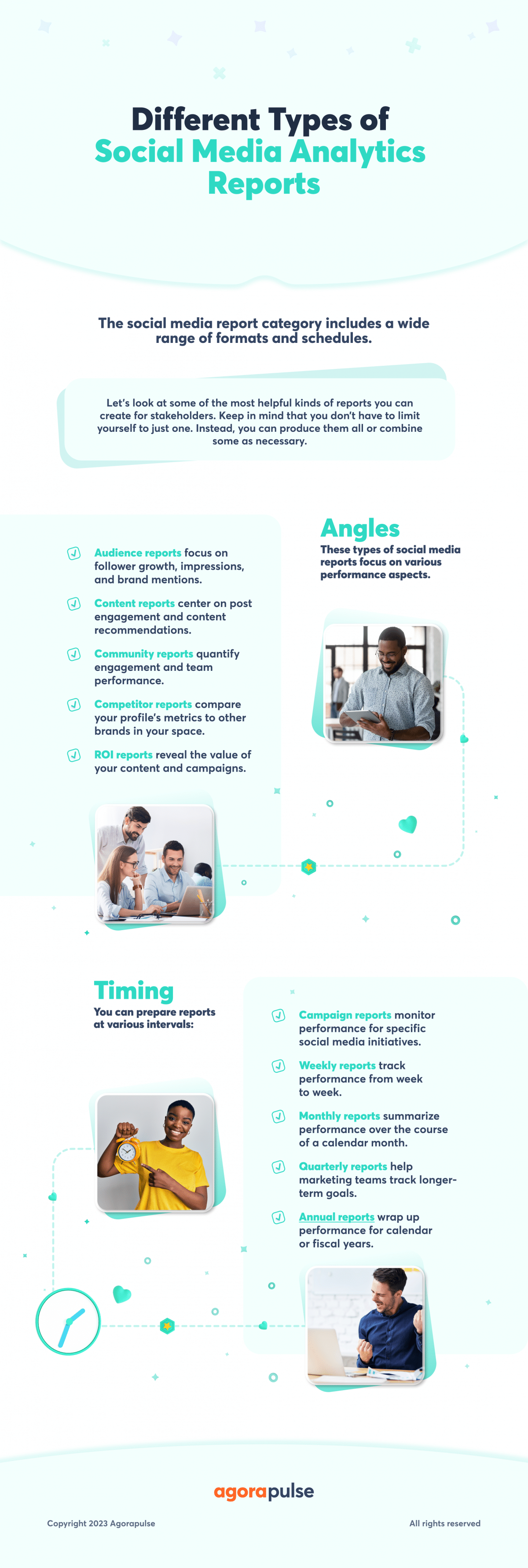
Example of what your agency can report on
Client Reporting Is Simple With Agorapulse
Agorapulse is an agency favorite because they understand our struggle when it comes to creating multiple client reports, and address them head-on. They also know the time constraints, client demands, and resourcing issues faced by most marketing agencies.
The Agorapulse dashboard combines everything an agency needs to successfully manage multiple clients in one place. That’s scheduling, responses, assigning team members, and creating killer reports.
Check it out for yourself and grab a free trial of Agorapulse to help you schedule, track, and measure all your social media efforts.
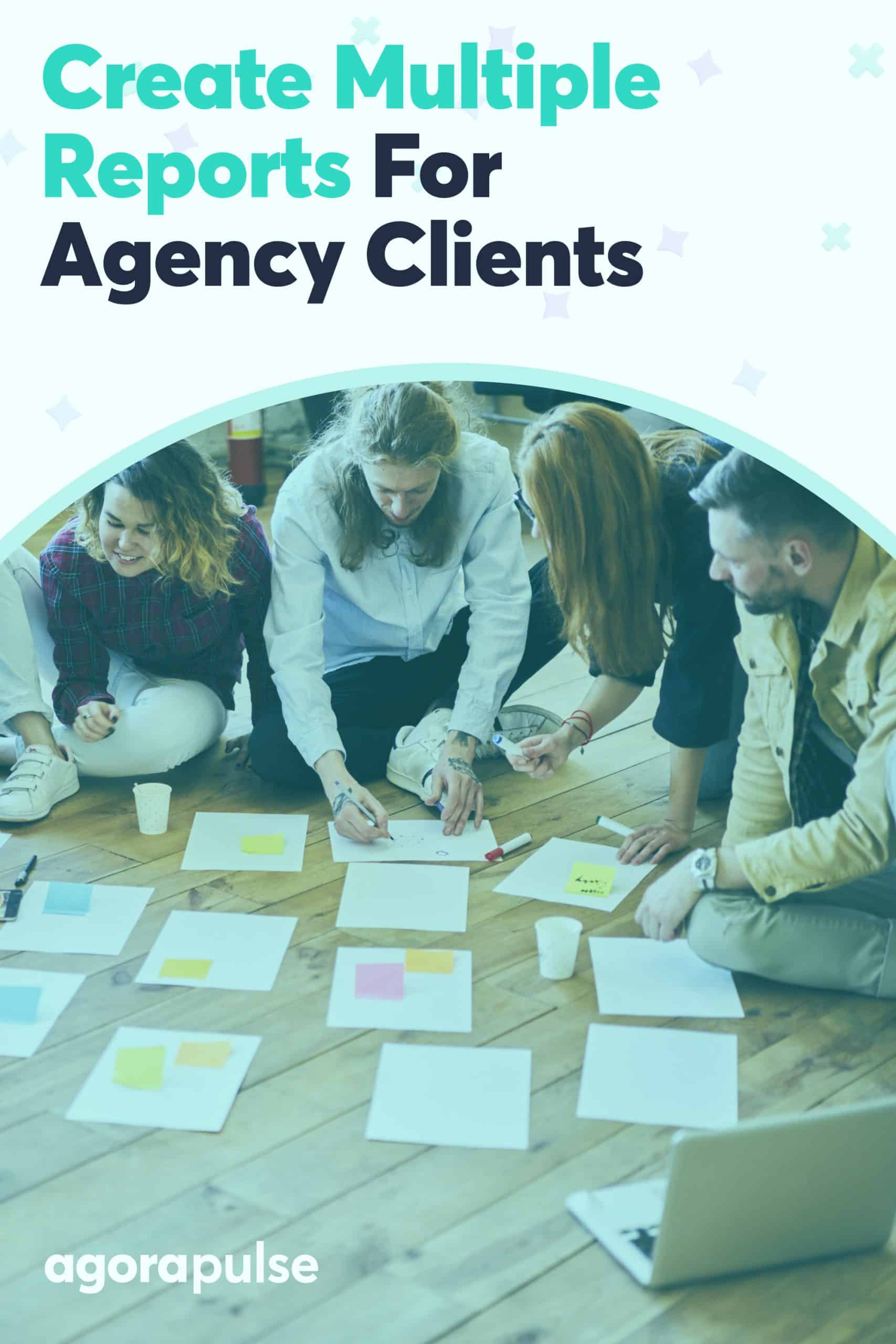
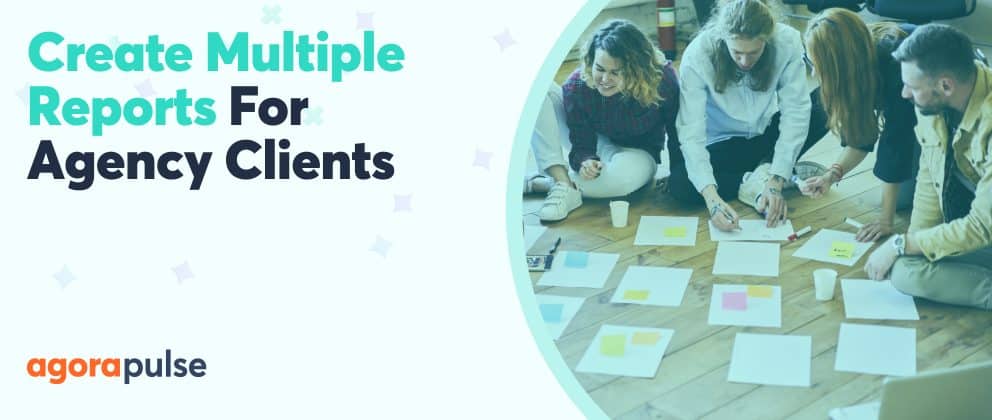


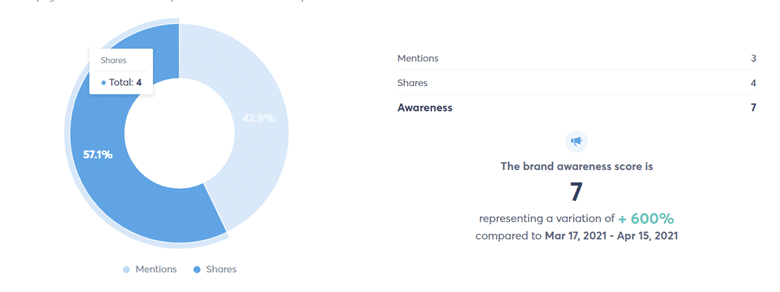
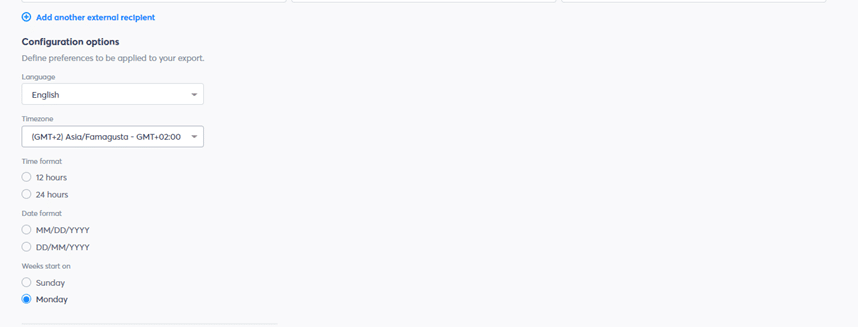


![Feature image of Game-Changing Insights for Agencies in 2024 [Free Ebook] Feature image of Game-Changing Insights for Agencies in 2024 [Free Ebook]](https://static1.agorapulse.com/blog/wp-content/uploads/sites/2/2023/12/Have-Agency-Insights-for-2024-Blogpost-Header-1200x508.jpg)